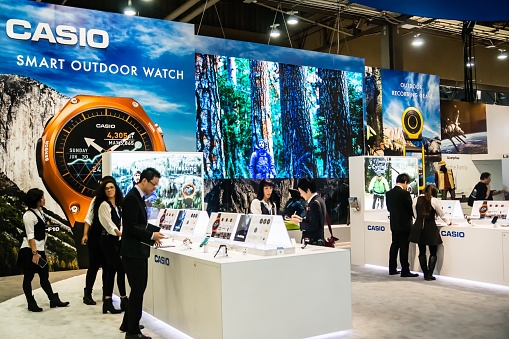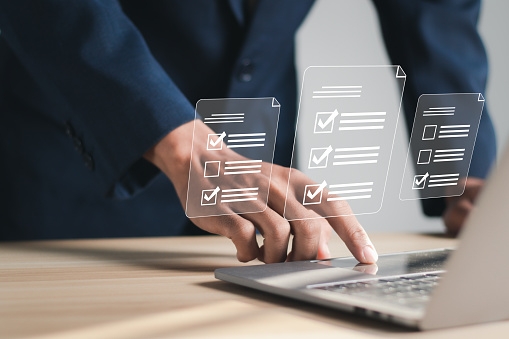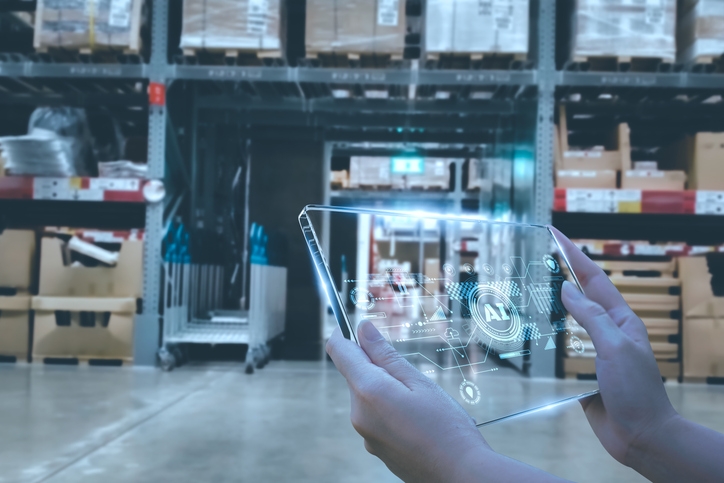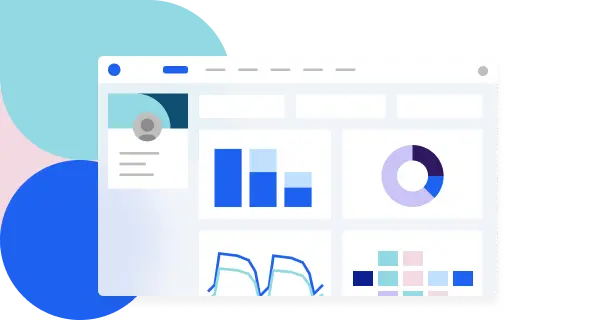Essential Trade Show Planning Checklist with Free Template
Discover the ultimate trade show planning checklist and download a free template to streamline your event preparation. Start planning effectively today!

Planning a successful trade show is a multi-step journey that covers everything from booth logistics and team coordination to lead generation and post-show follow-ups. Whether you're organizing your first trade show or managing multiple events throughout the year, having a structured approach is key to staying on track, meeting your goals, and maximizing your return on investment.
If you're just getting started, consider reviewing a full Trade Show Planning Guide first. It offers a thorough breakdown of the entire planning process, helping you understand how all the moving parts come together for a successful event.
Once you're familiar with the overall strategy, you can dive into the specifics. Create a centralized checklist to track all to dos and deadlines,
Some Important Categories to include:
- Marketing & communications
- Booth build & logistics
- Staffing & training
- Lead capture & follow-up
📥 – Includes a Gantt chart, task tracker, event budget planner, and pre–post event checklist.
Let’s begin with your trade show checklist for the 3–6 months leading up to the event.
1. 3–6 Months Before the Trade Show
Define Objectives and Success Metrics
The very first step in the event planning process is defining what success looks like. Your event planning checklist should begin with clear, strategic goals tied to your event marketing strategy.
Examples of trade show objectives:
- Generate [X] number of qualified leads
- Increase brand awareness in a new region
- Meet with key stakeholders and schedule meetings
- Launch a new product and generate interest
Tip: Use SMART goals (Specific, Measurable, Achievable, Relevant, Time-bound) to guide your planning process.
Choose the Right Trade Show
Not all trade shows are same. The show you pick must attract your target audience, align with your industry focus, and support your event marketing goals.
Evaluate:
- Past exhibitor success stories
- Audience demographics and decision-making roles
- Location and trade show floor plan
For example, if you're attending large expos like the Champs Trade Show, study the Champs trade show floor plan to understand visibility zones.

Allocate Prime Booth Spaces Strategically
As the event organizer, the way you allocate booth locations can significantly impact overall event flow, exhibitor satisfaction, and booth traffic across the show floor. Smart placement helps improve attendee experience and ensures key exhibitors get the visibility they need.
Key booth placement considerations:
- Prioritize high-traffic zones near lounges, entrances, or main category clusters
- Avoid placing booths behind large structures or in isolated corners
- Reserve premium spaces for anchor exhibitors, product demos, or major sponsors
- Ensure booths have enough room for demos, seating, or attendee engagement zones
Estimate Your Budget Early
Creating a detailed event budget helps you manage resources and prepare for unexpected challenges.
Include:
- Booth rental and design
- Staff travel, accommodation, and meals
- Technology (screens, apps, CRM, etc.)
- Swag, giveaways, and promotional materials
To maximize your ROI, implementing smart budgeting strategies is essential. We've also included a free template to help you effectively manage and track all cost components throughout your trade show planning journey.
Build a Marketing Plan
Effective event marketing ensures that you connect with potential customers before they even reach your booth.
Pre-show strategies:
- Launch an email marketing campaign
- Set up a dedicated landing page to schedule meetings
- Promote on LinkedIn and industry forums
- Send VIP invites with value offers
Begin Exhibit Design Early
While booth placement shapes the overall traffic flow, the design and functionality of each exhibit space determine how effectively exhibitors engage with attendees. As the event organizer, you play a key role in guiding or supporting exhibitors to craft booths that are both visually appealing and strategically structured to generate meaningful interactions.
Help your exhibitors think beyond backdrops and banners by encouraging these experience-driven elements:
- Clear, visible signage that highlights their unique value propositions
- Interactive digital screens showcasing product demos or live polling
- Lead capture setups using QR codes, tablets, or CRM-integrated tools
- Lounge-style areas that invite one-on-one conversations in a relaxed setting
Share resources on planning better trade show booths with your exhibitors to ensure, they are able to convert maximum leads.
2 Months Before the Event
Ensure Exhibitors Are Equipped with Promotional Materials
It’s important to ensure every exhibitor is fully prepared with effective, on-brand promotional materials. These assets are key to driving booth engagement and supporting overall trade show success.
Encourage exhibitors to bring:
- Business cards or digital contactless tools like QR codes
- Branded merchandise and eye-catching giveaways
- Informative materials such as one-pagers, product sheets, or demo videos
Pro Tip: Share with your exhibitors that useful, high-value items (like tote bags or power banks) tend to attract more visitors than generic items like pens. Including this in your event information packet helps them plan better.

Support Exhibitors in Training Staff for Booth Excellence
One of the key activities that significantly impacts show success is how well exhibitor staff engage with attendees. As the event organizer, you can provide guidelines or training recommendations to help them prepare.
Encourage exhibitors to train staff on:
- Delivering a clear, consistent brand story and sales strategy
- Using trade show tech tools effectively to generate leads and capture attendee data
- Confidently answer questions and handle objections
- Professional booth behavior that leaves a strong impression
Helping exhibitors stay organized and prepare thoroughly will ensure a functional booth experience for attendees and hence, event ROI for you.
Guide Exhibitors to Train Booth Staff for Maximum Impact
An exhibitor’s team can make or break their trade show ROI. Help your participants understand the value of a well-trained booth crew by offering pre-show resources or training modules.
Staff training should cover:
- Consistent messaging around their sales pitch and brand story
- Hands-on training with lead capture tools or event tech platforms
- Soft skills like handling tough questions, reading body language, and maintaining a welcoming presence
- Booth etiquette, including appearance, time management, and attendee engagement
1–2 Weeks Before the Trade Show
Run Final Tech & Logistics Checks
Now’s the time to double-check all event tech and infrastructure to ensure a seamless experience for exhibitors and attendees alike.
Checklist:
- Test tablets, badge scanners, displays, and screens
- Ensure CRM integrations are working for real-time lead capture
- Establish contingency plans for tech or Wi-Fi failures
Pro Tip: Use trade show planning software to track progress, attendee experience and consolidate checklists for your exhibitors and internal teams.

Finalize Staff Travel and Roster Schedules
Avoid last-minute surprises by confirming all travel and staffing details for your event personnel, volunteers, and support teams.
Organizer action items:
- Confirm all hotel bookings and flight itineraries
- Finalize duty rosters for registration desks, exhibitor relations, and help zones
- Schedule rotations and break times to avoid staff fatigue during key events
Ensuring your internal team is well-prepared is just as important as guiding your exhibitors to success.
During the Trade Show
Drive Attendee Engagement Across the Floor
As an organizer, it’s your job to create high-energy environments that keep visitors interacting throughout the venue. Focus on designing key activities and interactive zones that keep foot traffic moving.
Engagement ideas to support booth success:
- Floor-wide mini-games or gamified treasure hunts
- Scheduled live demos from key exhibitors that tackle real pain points
- Relaxation zones with charging stations and lounge seating
Creating a strong floorplan experience helps generate leads and improve overall show success.
Support Real-Time Lead Capture & Scoring
Enable exhibitors and your own event team to capture leads efficiently during the show. With the right tools, one can easily improve the quality as well as conversion rates of the leads captured.
Make sure teams can:
- Track leads per hour/day with integrated scanning tools
- Qualify leads as cold, warm, or hot based on engagement
- Review performance metrics of each exhibitor or staff member
Collect In-the-Moment Visitor Feedback
Don’t wait for post-event surveys—capture impressions while they’re fresh. This allows you to adjust during the event and informs future improvements.
Methods to implement:
- On-site micro-surveys or emoji feedback kiosks
- QR-based forms at exits or lounges
- Short feedback questions post-demo or after key sessions
Real-time feedback supports smarter decisions , quick tweaks if possible and better ROI analysis.
Post-Show & Future Event Planning
Prioritize Immediate Follow-Ups
The first 48 hours post-event are crucial. Help your exhibitors and internal teams capitalize on the momentum to nurture leads effectively.
Tasks to complete:
- Send automated thank-you messages from your CRM
- Route high-value leads to sales teams or sponsors
- Organize contacts into relevant segments for nurturing workflows
Integrated tech stacks save time and ensure no opportunity is missed. Use an event platform which can seamlessly handle post event analysis and follow up.
Measure ROI and Share Key Results
To continually improve, you need to track progress and measure your trade show’s performance against goals. Create a data-driven recap for all stakeholders.
Key metrics to analyze:
- Total leads captured across the event
- Engagement rate, booth traffic, and session attendance
- Cost per lead and sponsor ROI
Share insights in a clean post-event report to align stakeholders and sponsors on what worked.
Update and Refine Your Planning Process
Every show is a chance to improve your next one. Use what you’ve learned to refine your planning documents, exhibitor materials, and tech setup.
Post-event improvements:
- Document wins and challenges in your event debrief
- Revise your step-by-step guide for future shows
- Update exhibitor checklists and internal SOPs with insights
A refined event planning checklist ensures your next show runs even smoother and helps build a reputation for excellence.

Final Thoughts: Master Trade Show Planning with Confidence
From strategic planning and budgeting to booth design and lead capture, this essential trade show planning checklist with free template gives you the tools to manage every detail of your event planning journey.
You must also read about common trade show mistakes to be a little cautious and ensure you and your stakeholders steer away from common pitfalls.
So, whether you're navigating the event planning trade shows 2025 calendar or planning your next event, this guide ensures you create a successful event every time.
📥 Download the Free Trade Show Planning Template Excel to streamline your workflow, collaborate with your team, and simplify your event management process.
More Event Management












